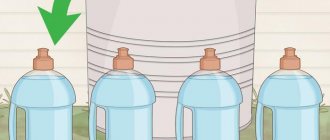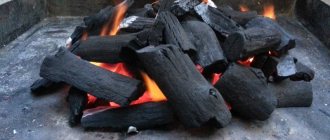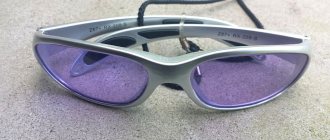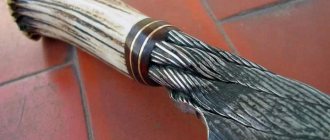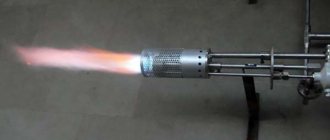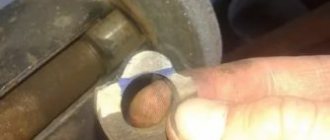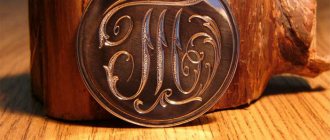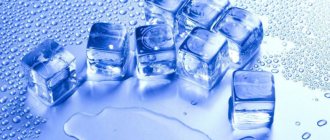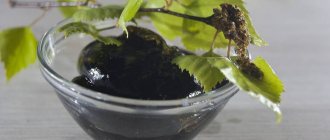Activated carbon tablets
Activated carbon is permeated with micropores and is similar in structure to a sponge that absorbs molecules of organic and inorganic substances. The product is used to treat intoxications, filter liquids and purify air masses, in cosmetology, and in the garden. Activated carbon absorbs substances more strongly than usual.
Why create activated carbon at home?
The need to make activated carbon at home is caused by the wide range of consumption of the product. The traditional method of use is to purify moonshine from fusel fractions. Carbon filler is required in filters for purifying drinking water, water in aquariums, and in home hydroponics.
The air is purified by activated carbon from excess humidity, odors, and pollutants. In the garden, the substance is applied to the ground along with fertilizers and dug into the soil to protect the seedlings. Coal draws excess moisture from the soil and protects the roots of garden crops from rotting and mold development. Cosmetic cleansing of oily skin, masks, gels are another area of application of the absorbent.
The use of a universal absorber in the garden, everyday life, and cosmetology requires large quantities of the drug. Increases consumption and the need for periodic replacement of carbon filler in filters.
Important! Commercial carbon filters contain chemicals that are used to activate carbon masses on an industrial scale. Filters should be used strictly according to the instructions, otherwise the chemicals will add harmful effects to the water being purified.
Side effects
Cleansing the body with charcoal for too long, spontaneously increasing recommended dosages, ignoring contraindications and instructions, lack of permission from a doctor - all this leads to undesirable results. Each of these factors increases the risk of side effects, which include:
- allergic reactions;
- anemia;
- hemorrhage;
- hypovitaminosis: hypoglycemia, hypocalcemia;
- hypothermia;
- diarrhea;
- dyspepsia;
- gastrointestinal disorders: colic, intestinal obstruction;
- constipation;
- impaired absorption of nutrients from the gastrointestinal tract;
- metabolic disorder
- dehydration;
- general weakness;
- weakened immunity;
- temperature increase;
- attacks of suffocation;
- vomit;
- decreased blood pressure;
- embolism.
This is why cleansing with charcoal cannot be called a 100% harmless procedure. Many of these side effects are dangerous and require hospital treatment. So, before deciding whether to remove waste and toxins in this way, weigh the pros and cons.
On the other hand, if the sorbent was taken correctly, in accordance with the recommendations of specialists, the listed consequences are very rare.
Raw materials for making coal
Activated carbon can be prepared from various raw materials: wood, nut shells, animal bones (purchased from slaughterhouses), coal, and oil products.
Charcoal
Coal, which is suitable for further transformation into activated coal, is obtained from trees with dense and non-resinous wood - group A. These are birch, ash, beech (belongs to valuable tree species, not used for producing coal), elm, maple, oak. The use of wood from fruit trees and shrubs is allowed.
The wood is cleared of bark, core, and areas of rot that reduce the density and porosity of the final product. Reduce the yield of the future absorber by increasing the amount of ash.
coconut shell
Whole coconut
Coconut palms are tropical flora. Palm fruits are called nuts because of their hard shell. After extracting the nutritious pulp (juice), the shells are used by local residents to make primitive utensils and in the construction of dwellings.
Excess shells are sold to rope and coal manufacturers. Coconut shells are very dense, so the charcoal is extremely porous. It is considered the best of activated carbons.
Purify drinking water
Carbon is used in many filter systems. It does not kill bacteria and viruses, but it cleans. Performance of activated carbon in water filters. water from various organic particles, as well as residual chlorine and other disinfectant additives.
Using activated carbon, you can make a simple filter with your own hands. It won't clean as thoroughly as factory filters, but it will still improve the taste and quality of your water. This option will help out at the dacha or during camping conditions.
- Take a large plastic bottle and cut off the bottom. Make several holes in the cork.
- Place the bottle in another container, such as a glass jar or plastic canister, with the neck down.
- Place the first filter layer in the bottle - gauze or other fabric. Don't forget to boil it before use.
- Pour charcoal into a third of the bottle's volume. This would require too many tablets, so it is better to use already crushed coal, which is sold in large packages.
- Add another layer of fabric and your improvised filter is ready. If desired, you can add an additional layer of river sand: it will filter out large impurities. Wash and heat the sand, pour it on top of the coal, and place another piece of cloth on top.
The first few liters of water should be drained to remove small particles of coal. Also note that you cannot filter hot water, it must be at room temperature or cold.
Manufacturing methods
In industrial production, the drug is obtained by chemical and physical methods. At home, it is realistic to use only the physical method.
Physical method
The physical method includes three stages:
- Obtaining a coal substrate with a low oxygen supply (imitation of industrial pyrolysis).
- Activation of charcoal with water steam.
- Drying.
They take finely chopped wood raw materials (chips of 2–3 cm), without bark, core and without areas of rot.
Wood raw materials are slowly burned. They use a tin can (for example, a coffee can), a cast pan, a frying pan, a fire or a pit.
Operating principle: the container must be closed from above to limit the access of oxygen to the burned raw material. A layer of sand is poured onto the pit or fire. In the tin can, holes are made only at the bottom (to allow flammable gases to escape).
Trees of various species
Coal fuel (for example, for barbecue) is obtained from any trees and shrubs. Firewood with remaining bark, areas of rot, and shavings will be used.
If the goal is to create activated carbon, only hard wood is used as a raw material. The second condition is the absence of resins (in large quantities). Suitable options are beech or oak, but valuable trees are not usually used for charring. The traditional raw material for activated carbon is birch.
Answers from experts
Lexa Doig:
Yes, when passing steam at a temperature of more than 150C, activated carbon will not only be cleared of fusel oils but will also retain its adsorption abilities. If you simply heat it without steam, the active surface of the coal will sharply decrease and the pores will become clogged.
Tifus:
I think calcination is the most optimal method!
Ivan Chyonkin:
From the instructions for the Rodnik-M filter 8. PROCEDURE FOR REGENERATING ACTIVE CARBON 8.2 ...pour into an enamel bowl (aluminum is not allowed). Rinse the coal 2-3 times with tap water while stirring. Let the water settle, then drain it and strain the coal on gauze.8.3 Place the washed coal in an enamel bowl. Pour three liters of 3% bicarbonate of soda solution (three tablespoons per 1 liter of water). Heat to a boil and boil for 20-30 minutes.8.4 Drain the hot solution, rinse the coal 4-5 times with tap water, then strain on gauze.8.5 The number of possible regenerations of the coal is 3-4, after which it must be replaced with fresh one.
Docc:
Activated carbon.
Production.
Good activated carbon is obtained from nut shells (coconut shells, from the seeds of some fruit crops.) Previously, activated carbon was made from cattle bones (bone charcoal). The essence of the activation process is the opening of pores that are in a closed state in the carbon material. This is done either thermochemically (the material is first impregnated with a solution of zinc chloride, potassium carbonate or some other compounds and heated without air access), or by treatment with superheated steam or carbon dioxide or a mixture thereof at a temperature of 800-850 degrees. In the latter case, it is technically difficult to obtain a vapor-gas agent having such a temperature. A widespread technique is to supply a limited amount of air into the apparatus for activation simultaneously with saturated steam. Part of the coal burns and the required temperature is reached in the reaction space. The yield of active carbon in this process variant is noticeably reduced. The specific pore surface area of the best brands of active carbons can reach 1800–2200 m2; per 1 g of coal. There are macro-, meso- and micropores. Depending on the size of the molecules that need to be retained on the surface of the coal, coal must be produced with different pore size ratios.
Characteristics of activated carbon. Pore size.
The determining influence on the pore structure of activated carbons is exerted by the starting materials for their production. Activated carbons based on coconut shells are characterized by a larger proportion of micropores (up to 2 nm), while those based on coal are characterized by a larger proportion of mesopores (2-50 nm). A large proportion of macropores is characteristic of wood-based activated carbons (more than 50 nm).
Micropores are particularly well suited for the adsorption of small-sized molecules, while mesopores are particularly well suited for the adsorption of larger organic molecules.
HARNESS:
Download the crack
Algorithm of actions
To obtain a high-quality product, the technological cycle is carefully followed.
Dry distillation of raw materials
Wood raw materials are burned on a gas stove. A fire is used outdoors, and a stove is used in a village house. In a city apartment, a blowtorch will help.
If you can start a fire, the tin can method will do. Dry crushed wood is placed in a tin can, low and wide. Drill several (10–15) holes in the bottom of the jar through which flammable gases and smoke will escape.
The gases will burn in an open flame - the risk of accidental carbon monoxide poisoning is negligible. The top of the tin has no holes. Air does not enter the jar, and the raw materials are charred evenly. When the chips have burned out completely, turn off the heat under the tin and let it cool.
Carbon activation
Hot kettle
The next stage is the activation of the resulting product, or opening of the pores. At home, either steam or immersion in boiling water is used for activation. The latter method washes away the carbon soot - the absorption capacity of the future product is reduced.
More often they use water steam - they hold a coal substrate over it. Take a tall pan, fill it halfway and wait for the water to boil. The semi-finished product is wrapped in gauze and suspended in a pan above the water level - in a cloud of steam. The lid is closed. The steam will expand and unclog the pores of the product.
Drying and storage
The future absorber is wet after activation and needs to be dried. Dry the coal in any available way: in the air, in the oven, in the sun. You can place the already activated gauze product back into tins with holes at the bottom and dry them over a flame. After drying, the drug is ready for use.
If the adsorbent is not used immediately, it is sent for storage. You will need glass jars with tightly sealed lids. Avoid access of air inside, otherwise air pollutants will be absorbed by the porous surface of the coal, and its cleaning power will decrease. The crushed absorbent is poured into the jars and placed in a dark place, as cool as possible: underground, refrigerator. The product lies quietly for several years and does not lose its beneficial properties.
If storage conditions are violated or not created, the drug will lose its absorbency after a few weeks.
Get rid of unpleasant odor
Charcoal absorbs odors perfectly.
Therefore, if you have an unpleasant odor in your refrigerator or kitchen cabinet, place a bowl of charcoal tablets inside. They can also be placed at the bottom of a trash can, in a laundry basket, or near the cat's litter box. Change your tablets regularly and foreign odors will no longer bother you. Using activated carbon you can also get rid of odor in shoes. Crush a few tablets, pour them into a cloth bag and put it in your shoes at night. If you do this every night, your shoes will always be fresh.
Take note
